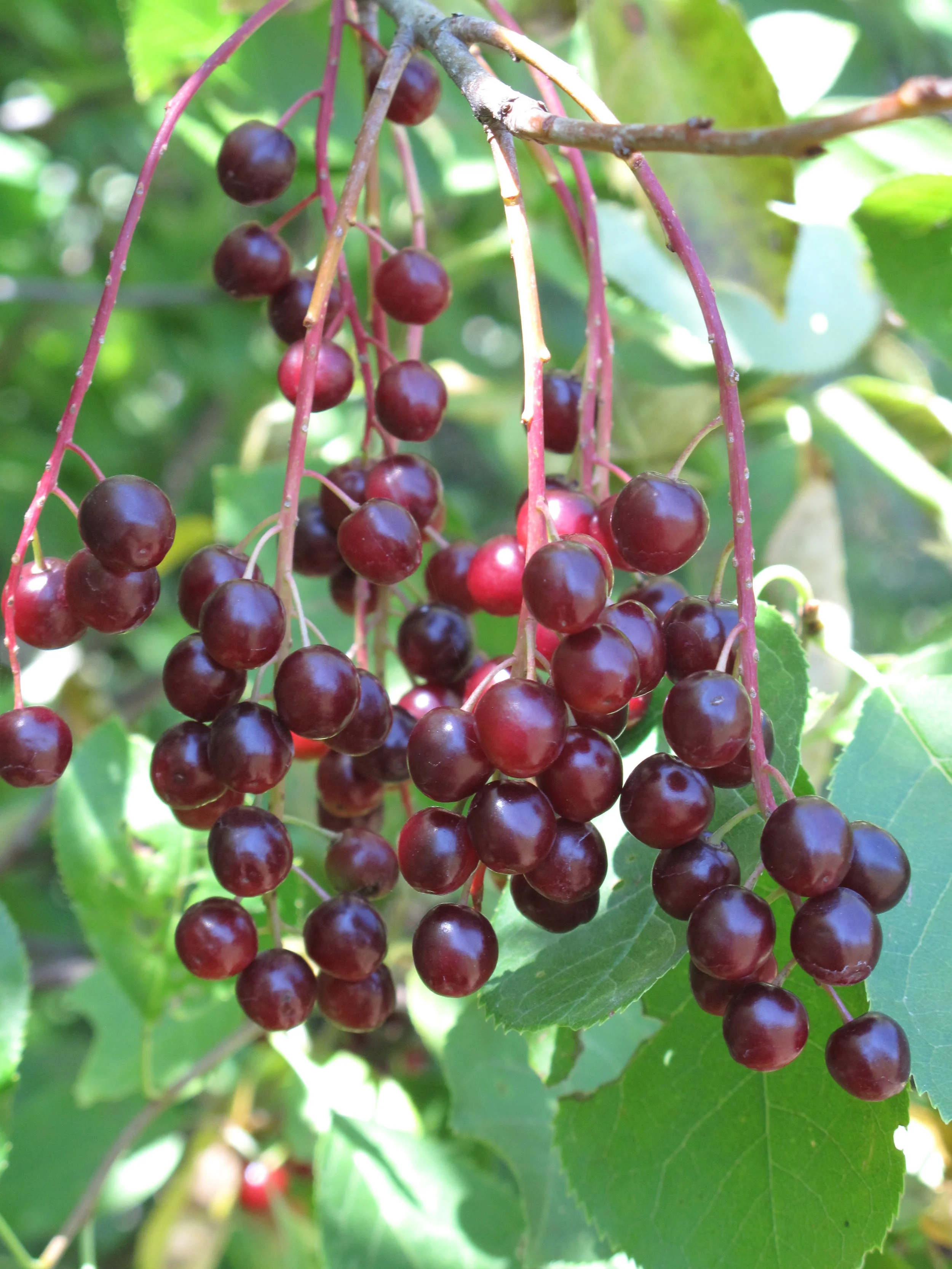Chokecherry
Ethnobotany
A small tree or shrub up to 6 m tall, the chokecherry is very common in ravines and open woodlands throughout the prairies. White flowers in a dense cylindrical raceme 5–15 cm long mature to astringent purple black fruit.
Europeans turn these fruit into jelly and country wine, but the Blackfoot had many uses for the whole plant. Like saskatoon berries, the “berries were used in soups, stews, eaten raw, or pounded stones and all, and mixed with pemmican....The bark was boiled and the decoction, with sweet cicely and valerian, was used in the treatment of dysentery...[and the] dried inner bark ...[was boiled and] drunk while warm to cure a cold.” (Johnston 39) Johnston also reports that “the dried root was chewed and placed in wounds to stop bleeding.” (39)
According to Hungry Wolf, chokecherry wood also had important uses. It is hard, and was used for pipe stems, tipi pegs and arrows. As it does not absorb water once it is dry, it makes a good in rain or snow. (10–11)
Botany
Growth habit and range: This common, spreading shrub or small tree is found in moist, protected ravines and open woodlands throughout all but the most northern areas of the province. It grows to a height of 2–6 meters.
Description: The younger bark is smooth and red-brown in colour. Older bark is greyish and rough. The dark green leaves are obovate or oval in shape, tapering to a sharp tip. The leaf margin is finely toothed. Each leaf is held on a 5–15 mm petiole (leaf stalk) and measures 6–10 cm in length.
The fragrant flowers appear in May and June and are borne in dense, pendulous, cylindrical racemes measuring 5–15 cm in length. Each flower measures 1 cm in diameter and is held on a 4–8 mm long pedicel. Each of the five petals is white to cream in colour and 2–4 mm in length. The stamens are yellow-tipped and number 20–25 per flower. The fruit is a small, dark purple, shiny, berry-like drupe measuring 8–10 mm in diameter. Each fruit contains a single large stone-like seed. The fruits are edible but have a sour taste. The fruit may be used to make wine, jelly and syrup.
References
Hungry Wolf, Adolf. 1989. Teachings of Nature. Good Medicine Books, BC.
Johnston, Alex. 1987. Plants and the Blackfoot. Occasional Paper No. 15., Lethbridge Historical Society, AB.


